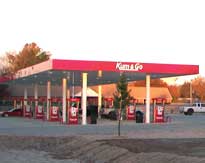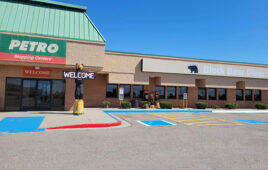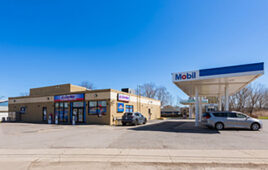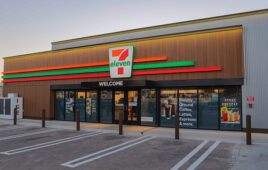 The renewed American Taxpayer Act offers some key tax breaks to convenience store retailers through 2013.
The renewed American Taxpayer Act offers some key tax breaks to convenience store retailers through 2013.
By Mark Battersby, Contributing Editor.
The so-called “Fiscal Cliff” tax bill enacted last December, the American Taxpayer Relief Act, renewed important tax breaks used by some c-stores to reduce the out-of-pocket expenditures required to keep their business premises fresh and attractive to customers.
Combine these renewed provisions, tax breaks that never disappeared, government funding, and the cost of remodeling or fixing up any retail business can be greatly reduced.
Improvements and Taxes
Under our tax rules, buildings and other so-called capital assets are generally depreciated and written off over 39 years. Those same tax rules contain a special 15-year, straight-line depreciation write-off for leasehold improvements, restaurant property and retail improvements.
As the IRS defines Qualified Leasehold Improvement Property: “Improvements to a nonresidential building’s interior (other than elevators, escalators, enlargements, structural components benefiting common areas, interior structural framework) made pursuant to a lease.” While restaurant property and the retail improvement property are more difficult to qualify for, all qualifying improved space must be occupied by a tenant or subtenant with improvements placed in service more than three years after the building was first placed in service.
Faster Remodeling Expense Write-Offs
The American Taxpayer Relief Act extended through 2013 the Tax Code’s Section 179, first-year expensing write-offs. Thus, a c-store can expense and immediately deduct up to $500,000 of expenditures in 2012 and 2013, subject to a phase-out if total capital expenditures exceed $2,000,000.
Those c-store operators and businesses with expenditures in 2012 and 2013 for qualified real property, such as land and whatever is erected on it—including the already-mentioned leasehold improvements, qualified restaurant property, and qualified retail improvement property—can elect to claim Section 179, expensing treatment for such expenditures.
The tax break that allows profitable convenience store chains, franchisees and independent grocery marketers to write off large capital expenditures immediately—rather than over time—allows 50% bonus depreciation for property placed in service through 2013.
The Code Section 179 first-year expensing write off remains a viable alternative especially for small businesses. After all, property qualifying for the Section 179 write-off may be either used or new in contrast to the bonus depreciation requirement that the taxpayer be the “first to use.”
Removing Barriers
Although the cost of an improvement to a business asset is normally considered to be a capital expense, any convenience store operation can choose to immediately write off and deduct the costs of making a facility more accessible to and usable by those who are disabled or elderly. Naturally, the convenience store business must own or lease the facility for use in connection with their trade or business.
A facility is considered to include all or any part of buildings, structures, equipment, roads, walks, parking lots, or similar real or personal property. Naturally, the c-store business cannot deduct any costs paid or incurred to completely renovate or build a facility or to replace depreciable property in the normal course of business.
When it comes to limits, the most that can be deducted as a cost of removing barriers to the disabled and the elderly for any tax year is $15,000. However, any costs over this limit can be added to the basis of the property and depreciated.
Small businesses with 30 or fewer employees or total revenues of $1 million or less can use the Disabled Access Tax Credit. Eligible small businesses may take a credit of up to $5,000 (half of eligible expenses up to $10,250, with no credit for the first $250) to offset their costs for access, including barrier removal (widening a doorway or installing a ramp, for example), provision of accessibility services (such as sign language interpreters), provision of printed material in alternate formats (including large-print graphics, enhanced audio and Braille), and provision or modification of equipment.
Writing Off Remodeling
Because a building’s components could be depreciated over a smaller number of years, depreciating the components individually usually yielded substantially higher depreciation write-offs, especially when compared to depreciating the building as a whole. Rightly or not, there were perceptions that so-called component depreciation was often used in an abusive manner, and it was ended in the mid-1980s.
However, recent court rulings, most notably the landmark Hospital Corp. of America case, validated another strategy for increasing depreciation: cost segregation. Unlike component depreciation, which focused on a building’s systems, cost segregation focuses on land and interior improvements, which have a shorter depreciation period or economic life.
Normally not depreciable, the cost of improvements, such as paving, curbs, sidewalks, signs and landscaping, can be segregated and written off. Interior improvements, all of which have shorter depreciable lives, include carpet, vinyl tile, signs, wall coverings and certain electrical and plumbing equipment.
The IRS has developed a manual to guide its auditors, the Audit Technique Guide (ATG), that clearly defines those expenditures qualifying for five, seven and 15-year depreciable lives. Using the IRS guided method in the ATG provides a safe harbor for taxpayers.
Build-Outs and Building Improvements
Many landlords offer turnkey construction of leasehold improvements. Whether the space planning and construction is provided by the landlord or the tenant, there is a construction allowance generally available to the tenant. When the tenant builds out its own space, the landlord will generally pay a specified amount of money toward the construction.
Most commercial office building leases call for turnkey construction, whereas retail and industrial leases may tend toward the tenant having the work done. Often overlooked is the fact that build-outs are not limited to the original lease. Negotiating the extension or renewal of a lease can, and often does, include build-out allowances or other amounts to remodel, re-finish or otherwise update the business premises.
Overlooked Fixing-Up Funding
When it comes to financing remodeling, every convenience store operator and executive should keep in mind that the U.S. Small Business Administration (SBA) doesn’t do much lending. Rather, they guarantee the repayment of loans made by a financial institutions thereby lowering or reducing the institution’s risk and, in most cases, the amount of interest charged the borrower.
The SBA’s primary and most flexible 7(a) Loan Program is designed for both start-up and existing small businesses, and involves government-backed guarantees for amounts loaned for general business purposes. The SBA’s CDC/504 Loan Program provides long-term, fixed-rate financing to acquire fixed assets (such as real estate and equipment) for expansion or modernization. Rather than commercial lending institutions, 504 loans are delivered via CDCs (certified development companies)—private, non-profit corporations set up to contribute to the economic development of their communities.
Both tenants and owners can take advantage of tax breaks, especially the recently passed American Taxpayer Relief Act, to help reduce the out-of-pocket expenses of sprucing-up retail spaces. The shorter depreciable life for leasehold improvements, which might also qualify for the first-year, Section 179 expense deduction, or the 50% bonus write-offs substantially reduce out-of-pocket expenditures necessary to fix-up or improve a convenience store. Don’t forget many of those tax breaks will disappear at the end of 2013, and professional assistance may be necessary.




